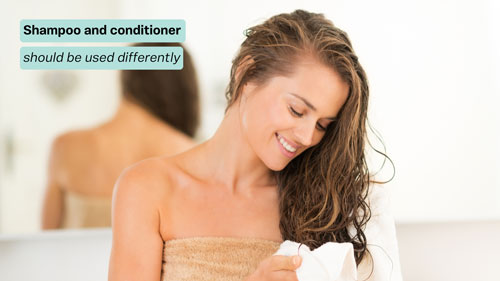The right technique to stop hair thinning
Proper hair care isn’t just about looking good; it’s also important for maintaining scalp health and preventing hair thinning. This is more significant when undergoing a hair loss treatment as you want to make sure you are providing the right environment for growth.

Scalp Health
A healthy scalp is important for hair to be able to grow. It can also help prevent conditions like dandruff and scalp psoriasis.
Hair Treatment
With the proper hair care practices such as regular trimming and gentle handling, you can reduce breakage.
Gentle Products
Chemical treatments and heat styling can damage your hair. Always look for products that are free of parabens, alcohol, formaldehyde, silicones or synthetic fragrances.
Wash Regularly
You should wash your hair at least once per week. Regular washing removes sweat, dead skin cells, and excess oils from the scalp, to stop your follicles getting blocked.
How Shampoo & Conditioner Works
Most people wouldn’t really think about it, but how you use shampoo should be different to how you use conditioner. This is largely due to the different functions of each product.
Shampoo
Cleanses the scalp and removes dirt, excess oil, and product buildup from the hair. It’s this buildup that can sometimes hinder hair growth.
Conditioner
Hydrates and nourishes the hair, improving manageability and softness.

The Right Way to Shampoo
Keeping your hair healthy and clean isn’t hard, but we know everyone has their own routine. For the best hair health and to minimise hair thinning, we recommend the following steps:
Wet Your Hair
Thoroughly wet your hair with lukewarm water before applying shampoo.
Don’t Overdo the Shampoo
A dollop of shampoo around the size of a 20c coin is usually enough for medium-length hair. Of course, you can add a bit more if you have longer hair.
Work up a Lather
Rub the shampoo between your palms and apply it to your scalp, starting at the hairline and working backwards.
Massage Gently
Use the pads of your fingers to massage the shampoo into your scalp using small, circular motions. Massaging the scalp can stimulate hair growth so take your time and ensure even distribution.
Rinse Thoroughly
Rinse your hair until all traces of shampoo are removed. If you’re feeling brave it’s good to finish with a cool water rinse to add shine and close the hair cuticle.
The Correct Way to Condition
Applying conditioner correctly is key to maintaining hydrated, manageable hair. Here’s some tips to suit your hair type:
Fine Hair
Use a small amount of lightweight conditioner mainly on the ends to avoid weighing down the hair.
Medium Hair
Apply a moderate amount of conditioner from mid-length to the ends.
Thick or Coarse Hair
Use a generous amount of a rich conditioner, focusing on areas prone to dryness.
Curly Hair
Apply a generous amount of moisturising conditioner to define curls and manage frizz.
Common Conditioning Mistakes
To ensure optimal results, avoid these common conditioning mistakes:
Not Using Enough
Especially for thick or curly hair, insufficient conditioner can lead to tangles and frizz.
Applying to the Scalp
Conditioner should only be applied to the hair, not the scalp, to prevent buildup.
Rinsing Too Quickly
Allow the conditioner to penetrate the hair for 2-3 minutes before rinsing thoroughly.
Using on Dirty Hair
Conditioner is most effective when used on clean, shampooed hair.
Final Thoughts
With the right care, you can grow healthier, stronger hair. But when it comes to hair loss it’s important to remember that shampoo and conditioner are just part of the solution, creating the right environment for hair growth. The stop hair thinning and prevent balding, you need a hair treatment that gets to the root causes of your hair loss condition.
To get real about regrowing your hair, we recommend coming into an Ashley & Martin Medical Hair Loss Clinic for a free consultation. Here our team will examine your condition before letting you know what treatment options are likely to work best for you.
